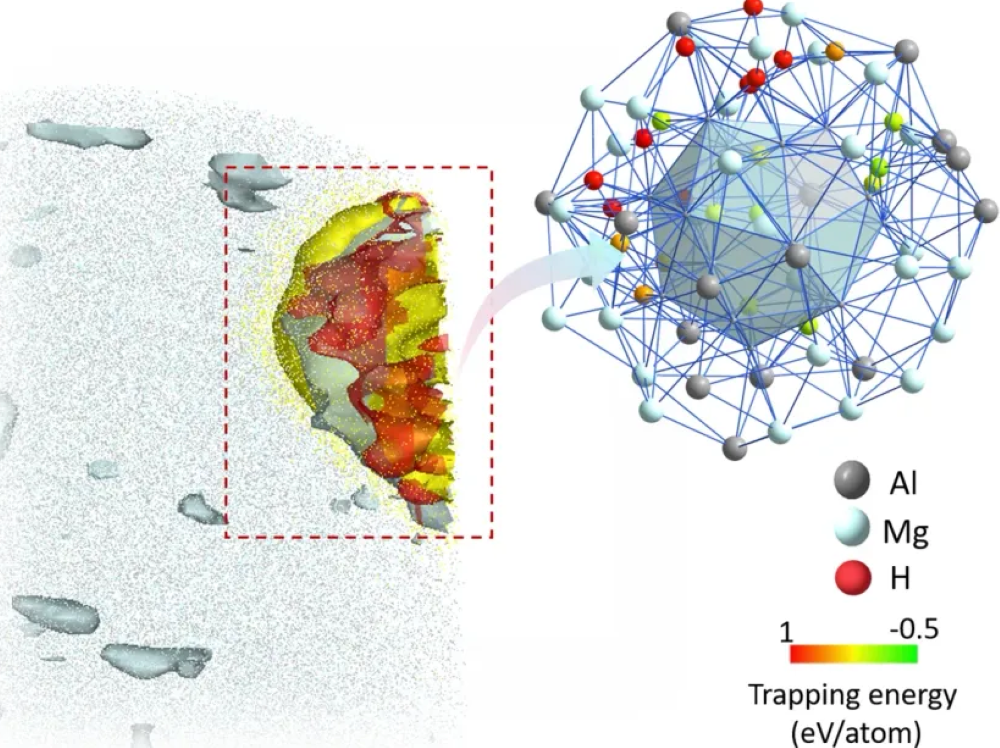

Researchers from the Max Planck Institute for Sustainable Materials (MPI-SusMat) in Germany have developed a new innovation that helps overcome the dilemma of aluminium's embrittlement, leading to cracking and failure when exposed to hydrogen.

The problem
In collaboration with partners from China and Japan, the researchers have introduced a groundbreaking alloy design strategy that resolves a long-standing trade-off. Their innovative approach achieves both outstanding strength and enhanced resistance to hydrogen embrittlement (HE), marking a significant step toward safer and more efficient aluminium components for the hydrogen economy. It is known that inspite of aluminium's widely valued nature for low weight and corrosion resistance, the green-metal faces a major hindrance when exposed to Hydrogen, thus restricting its use in relevant technologies where high strength is essential.
The findings have been published in Nature.
The solution
Central to this breakthrough is a sophisticated size-sieved precipitation strategy applied to scandium-enriched aluminium-magnesium alloys. Using a two-step heat treatment process, the researchers created fine Al₃Sc nanoprecipitates, encased in a structurally complex Al₃(Mg,Sc)₂ shell formed in situ.
These dual-phase nanoprecipitates are uniformly dispersed throughout the alloy, serving two critical functions: the Al₃ (Mg,Sc)₂ shell acts as a hydrogen trap, significantly improving resistance to hydrogen embrittlement, while the Al₃Sc core enhances the alloy's overall strength.
"Our new design strategy solves this typical trade-off. We no longer have to choose between high strength and hydrogen resistance - this alloy delivers both," said Professor Baptiste Gault, head of the group "Atom Probe Tomography" at MPI-SusMat and one of the corresponding authors of the newly published work.
The findings are striking - the new alloy exhibited a 40 per cent increase in strength and a fivefold enhancement in resistance to hydrogen embrittlement compared to scandium-free counterparts. Notably, it also achieves a record uniform tensile elongation of up to 7 ppmw in hydrogen-charged aluminium—an indicator of exceptional ductility under hydrogen exposure.
Critical to understanding the alloy's performance, atom probe tomography conducted at MPI-SusMat confirmed the hydrogen-trapping role of the Al₃(Mg,Sc)₂ phase at the atomic level. Complementary experiments at partner institutions, including advanced electron microscopy and computational simulations, further validated the material's design and behaviour.
The researchers applied their alloy design strategy across multiple aluminium alloy systems and successfully demonstrated its scalability using water-cooled copper mould casting and thermomechanical processing—techniques compatible with existing industrial practices. This work sets the stage for a new generation of aluminium materials engineered to meet the rigorous demands of a hydrogen-powered future: safe, high-strength, and industrially viable.
This collaborative research was primarily conducted by teams from Xi'an Jiaotong University and Shanghai Jiao Tong University in China, together with the Max Planck Institute for Sustainable Materials in Germany.
Image Source: Chemeurope website
Responses








